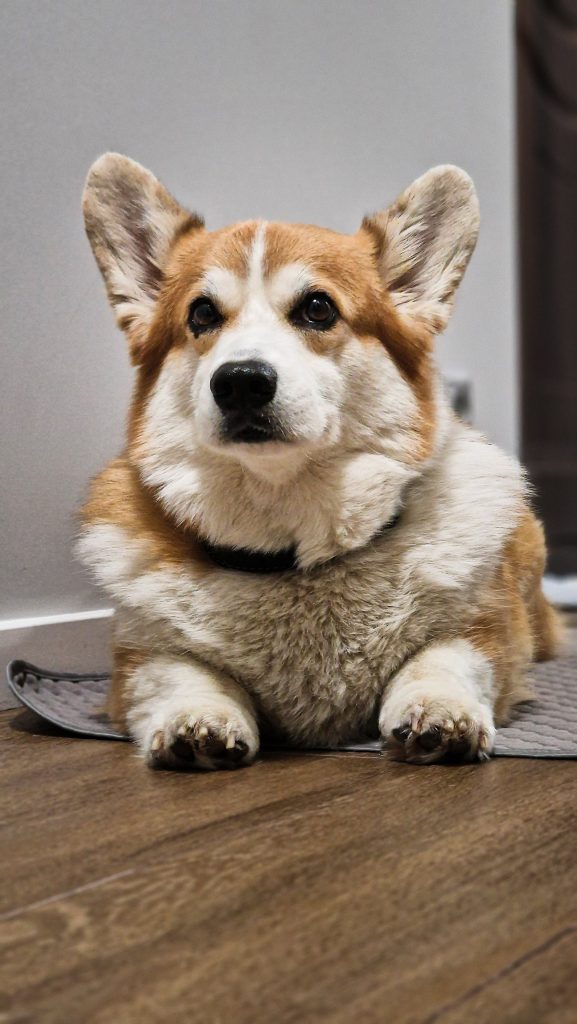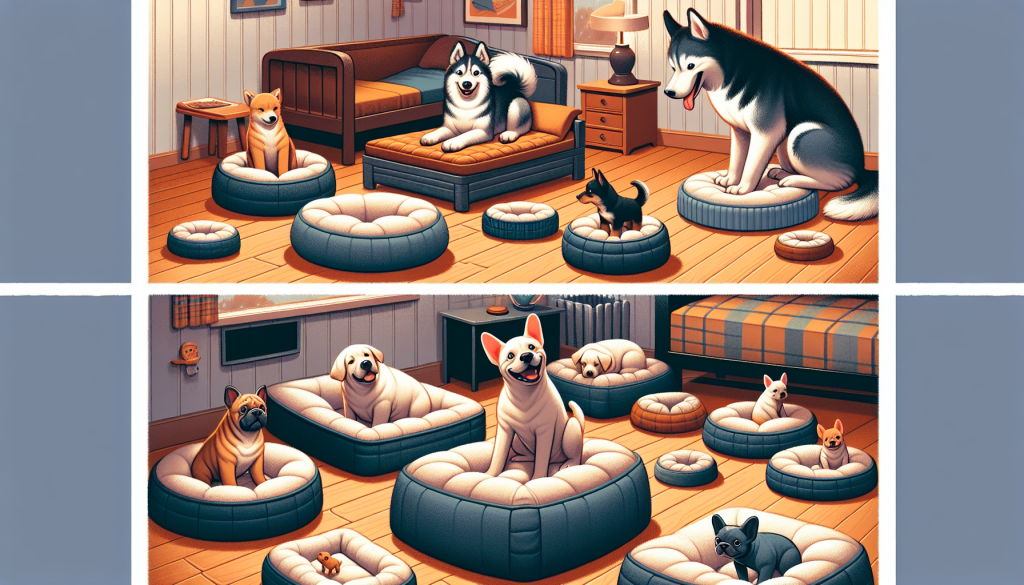Picture this: your beloved furry companion eagerly wagging its tail as you bring home a brand new dog bed. But have you ever wondered whether your pooch actually prefers a smaller bed? In this article, we’ll uncover the fascinating truth behind canine bed preferences and offer insights into why a smaller bed might just be the perfect fit for your four-legged friend. So, get ready to unravel the mysteries of your pup’s slumber choices and discover the cozy secrets to their contented dreams.

Factors that Influence Dogs’ Bed Preference
When it comes to choosing a bed for your beloved four-legged friend, there are numerous factors that can influence their preference. Understanding these factors can help you provide the most comfortable and suitable bed for your canine companion. From their size and sleeping position to their body temperature and personal preference, each aspect plays a role in determining the perfect bed for your dog. Let’s explore these factors in detail to ensure that your furry friend gets a good night’s sleep.
Size of the Dog
Breed
The breed of your dog can greatly affect their bed preference. Different breeds have varying sizes and body structures, which means they may require different sized beds. For instance, larger breeds such as Great Danes and St. Bernards will require extra-large beds to accommodate their size, while smaller breeds like Chihuahuas and Dachshunds may feel more comfortable in smaller beds.
Weight
Just like human beds, the weight of the dog is an important consideration when choosing a bed. Heavier dogs may sink too deep into a bed that is not supportive enough, leading to discomfort and poor sleep. On the other hand, a bed that is too firm may not provide enough cushioning for lighter dogs, resulting in pressure points and stiffness.
Height
While height may not be the sole factor in determining bed size, it can play a role in the overall comfort of your dog. Taller dogs may prefer beds with higher sides or bolsters that provide a sense of security and support for their neck and head.
Sleeping Position
Back Sleepers
Some dogs are back sleepers, preferring to sleep on their backs with all four legs in the air. These dogs may enjoy beds with a flat or slightly contoured surface that allows them to stretch out fully without any restrictive edges or bolsters.
Side Sleepers
Many dogs are side sleepers, curling up into a cozy ball on their side. For these dogs, a bed with softer cushioning and raised edges or bolsters can provide the comfort and security they seek while sleeping.
Stomach Sleepers
Dogs that prefer sleeping on their stomachs may benefit from beds that offer ample support and distribute their weight evenly. Beds with orthopedic features and firmer padding can help alleviate pressure points and promote better spinal alignment for stomach sleeping dogs.
Body Temperature
Understanding Dog Body Temperature
Dogs have a higher average body temperature than humans, ranging from 100.5°F to 102.5°F (38°C to 39.2°C). It is important to consider their natural body temperature when selecting a bed, as beds with certain materials or designs can affect their body temperature regulation.
Temperature Regulation
Some dogs naturally have warmer body temperatures, while others tend to get colder easily. Beds with materials that offer breathability and airflow, such as cooling gels and mesh fabrics, can help regulate your dog’s body temperature and prevent them from becoming too hot or too cold while sleeping.
How it Affects Bed Preference
Dogs with higher body temperatures may prefer beds with cooling features or options that allow better air circulation, as it helps them stay comfortable and prevent overheating. Conversely, dogs with lower body temperatures may prefer beds with warmer materials, like memory foam or fleece, to keep them cozy and warm.

Coziness
Softness of the Bed
The softness of the bed is an important factor for many dogs. Just like humans, some dogs prefer beds with a plush and soft surface, while others may find it uncomfortable or too warm. It is essential to consider your dog’s comfort preferences when choosing the level of softness for their bed.
Padding
The thickness and quality of the padding in a dog bed can greatly affect its coziness. Dogs that require extra joint support, such as older dogs or those with health conditions like arthritis, may benefit from beds with thicker padding or orthopedic features.
Material
The material of the bed can also play a role in its coziness. Dogs with allergies or sensitivities may require beds with hypoallergenic materials, while others may prefer softer fabrics like fleece or velour. It’s important to choose a material that is both comfortable for your dog and easy to clean.
Pillows and Bolsters
Beds with pillows or bolsters can provide additional comfort and a sense of security for dogs. They can be especially beneficial for dogs that like to rest their heads on elevated surfaces or those that prefer sleeping against something for added support.
Familiarity
Training and Routine
Dogs are creatures of habit, and their bed preferences may be influenced by their training and daily routines. If your dog has been trained to sleep in a particular bed or area, they may show a preference for that specific spot.
Established Sleeping Habits
Some dogs develop specific sleeping habits throughout their lives. For example, if your dog has always slept in a certain position or prefers a particular type of bed, they may be more comfortable and content sticking to their established habits.
Home Environment
The familiarity of the home environment can also impact your dog’s bed preference. Dogs that have a designated sleeping area or bedroom within the house may gravitate towards their own space, associating it with comfort and security.

Bed Type
Standard Dog Bed
Standard dog beds come in various shapes, sizes, and materials to cater to different dog breeds and preferences. These beds often feature a flat or slightly cushioned surface and may include removable covers for easy cleaning.
Orthopedic Bed
Orthopedic beds are designed with extra support and cushioning to alleviate pressure points and provide comfort, particularly for dogs with joint issues or arthritis. These beds often feature memory foam or supportive foam layers.
Crate Bed
Crate beds are specifically designed for dogs that use crates or kennels as their sleeping spaces. These beds are typically thinner and made to fit the size and shape of the crate, providing dogs with a comfortable resting surface.
Donut Bed
Donut beds have raised edges or bolsters that encircle the bed, creating a cozy and secure space for dogs that like to curl up while sleeping. These beds offer support and a sense of protection, making them popular among many dogs.
Blankets and Pillows
While not a traditional bed, blankets and pillows can also be used as makeshift sleeping surfaces for dogs. Some dogs may prefer the flexibility and familiarity of using blankets or pillows, allowing them to adjust their sleeping position and create their own comfortable nest.
Room Temperature
Warmth Preference
Different dogs have different comfort levels regarding room temperature. Some dogs may prefer cooler sleeping environments while others may seek warmth. Observing your dog’s behavior and body language can provide valuable insights into their temperature preferences.
Cooling Options
If your dog tends to get warm easily or lives in a hot climate, providing a cooling option like a bed with cooling gel or a raised mesh surface can help regulate their body temperature. Similarly, if your dog gets cold easily or lives in a cold climate, offering a warmer bed with insulating materials can ensure their comfort.

Climate
Hot Climate
In hot climates, dogs may seek beds that offer cooling features or materials to prevent overheating. Elevated beds that allow air circulation, cooling pads, or beds made from breathable fabrics can help keep dogs comfortable in warm weather.
Cold Climate
On the other hand, dogs living in colder climates or those prone to feeling cold may prefer beds with insulating materials like memory foam or fleece. These materials can help retain their body heat and keep them warm during chilly nights.
Personal Preference
Range of Individual Preference
Just like humans, dogs have their own unique preferences when it comes to comfort. Some dogs may prefer soft and plush beds, while others may prefer firmer surfaces. It is essential to pay attention to your dog’s behavior and preferences to understand their personal comfort needs.
Trial and Error Approach
Finding the perfect bed for your dog may require some trial and error. Considering their size, sleep position, body temperature regulation, and personal preference, it may take some time to find the right match. Experimenting with different bed types, materials, and features while observing your dog’s comfort and behavior can help narrow down their ideal bed.
Bonding with the Bed
Lastly, it is crucial to remember that your dog’s bed is not just a place to sleep but also a part of their overall well-being. Spending time with your dog on their bed, incorporating positive reinforcement during training, and creating a cozy and inviting atmosphere can help strengthen their bond with their bed and enhance their overall comfort.
By taking into account all these factors, you can ensure that your beloved canine companion has a comfortable and cozy bed that meets their individual needs. A well-rested dog is a happy dog, and providing them with the perfect bed can contribute to their overall health and well-being.

